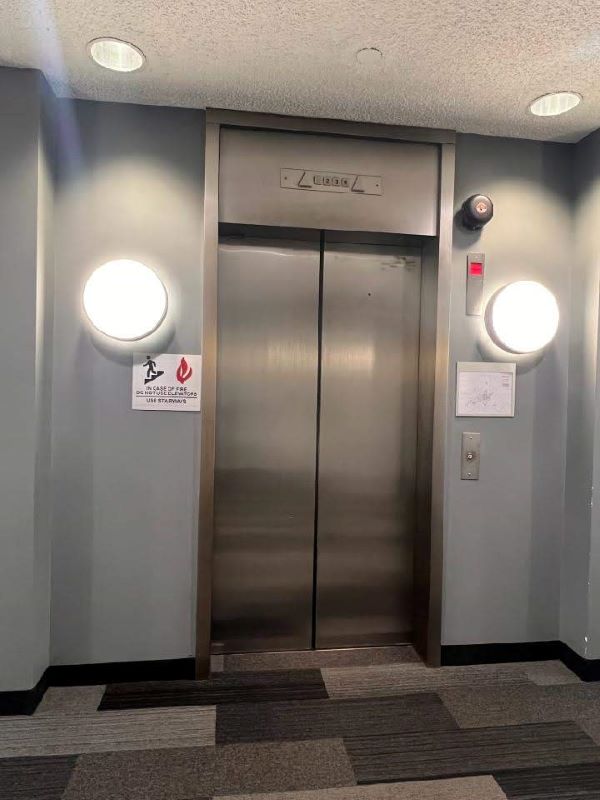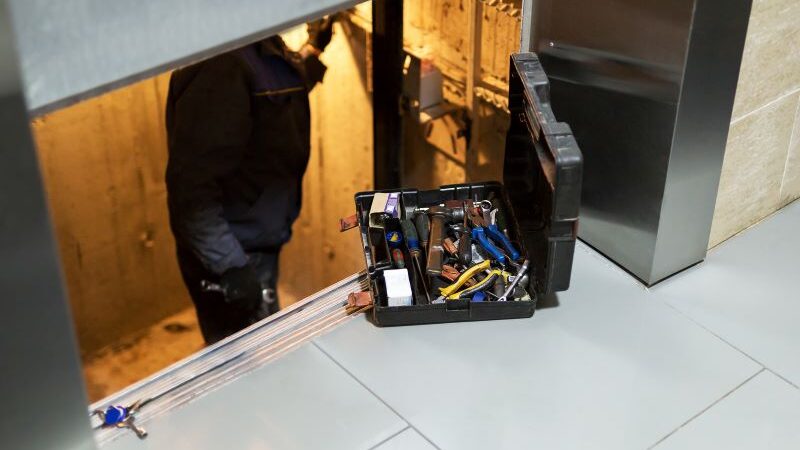Article by Joe Fowler – Project Manager –
Nearly every modern, multi-story building that we walk into includes an elevator. As Estimators, we see the elevator shafts on a Reflected Ceiling Plan and we take note; “I better include for sprinkler heads at the top and bottom of that shaft”. As it turns out, it is not quite so simple. I’ve had two customers call me recently to look into their existing elevators and you’d be surprised at what was uncovered. In both cases, a new elevator was being installed in an existing shaft, and the customer was looking for guidance on what type of fire protection should be required.
After completing some research on the NFPA website, I had learned that there are three areas of coverage that need to be evaluated when determining the appropriate sprinkler protection for an elevator:
- Elevator Pit
- Top of the Shaft
- Machine Room

Elevator Pit
The elevator pit requires sidewall sprinklers at a maximum of two feet above the floor of the pit. However, protection can be excluded from the pit if the shaft is enclosed, made of non-combustible material, and does not contain hydraulic (combustible) fluid. In practical terms, hydraulic type elevators will require a sprinkler head in the pit, while traction type elevators may be exempt if the building materials within the shaft are non-combustible.
Top of the Shaft
The top of the shaft follows a similar guideline. Sprinklers may be omitted at the top of the shaft if the materials making up the hoist-way, the elevator car itself, and the means of suspension are rated noncombustible/limited combustible by ASME A17.1, the Safety Code for Elevators and Escalators. If the elevator and shaft do not meet those requirements, then a sprinkler (upright, pendant, or sidewall) must be installed at the top of the shaft.

Machine Room
It is possible for the control rooms of Traction type elevators to meet a set of conditions that allow for sprinkler protection to be omitted. The space must be dedicated to elevator equipment only, it must contain smoke or other automatic fire detection, and will have to be separated by the rest of the building by specified fire rated walls. If these conditions are met, sprinkler protection may not be required. However, Machine Rooms for Hydraulic type elevators should always require sprinkler protection.
The information above is my interpretation of the guidelines laid out by NFPA 13. However, elevator codes often include additional complexity due to local amendments in many jurisdictions. While we need to be comfortable and familiar with the standards laid out by the NFPA Guidelines, best practice will always be to confirm compliance with your local building codes and AHJ. For more information on Elevator fire sprinkler requirements, there is a great article by Jonathan Hart with NFPA [Read NFPA Article Here].

